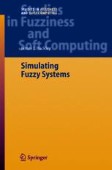Search
Search Results
-
On the Reduction of Molecular Degrees of Freedom in Computer Simulations
Molecular simulations, based on atomistic force fields are a standard theoretical tool in materials, polymers and biosciences. While various methods,...
-
Lattice Boltzmann Modeling of Complex Fluids: Colloidal Suspensions and Fluid Mixtures
The study of complex fluid dynamics requires development of numerical tools that capture the essentials of the dynamic coupling among the different...
-
Mesoscopic Multi-particle Collision Model for Fluid Flow and Molecular Dynamics
Several aspects of modeling dynamics at the mesoscale level are discussed: (1) The construction of a mesoscopic description of fluid dynamics. The...
-
From Genetic Variation to Probabilistic Modeling
Genetic algorithms ⦓GAs) [53, 83] are stochastic optimization methods inspired by natural evolution and genetics. Over the last few decades, GAs have...
-
Fuzzy Probability Theory
In this chapter we look more closely at the fuzzy binomial distribution, the fuzzy Poisson, and at the fuzzy normal,exponential and uniform...
-
Inventory Control II
This chapter continues the inventory control problem studied in the previous chapter. The new system is shown in Fig. 17.1. We have added two things...
-
Summary and Conclusions
The first objective of this book is to explain how many systems naturally become fuzzy systems. The second objective is to show how regular (crisp)...
-
Simulation Optimization
In this chapter we discuss how we plan to solve the optimization problems attached to the simulation as expressed in (5-4)-(5-5) in Chap. 5, or...
-
Machine Shop I
The queuing system in this chapter is shown in Fig. 11.1. This application was adopted from a problem in ([1], p.594). We continue this problem in...
-
Priority Queues
This chapter will use the queuing system in Chaps. 5 and 9, but with priority orders. The system is shown in Fig. 19.1. Everything is the same as in...
-
Hierarchical Bayesian Optimization Algorithm
The previous chapter has discussed how hierarchy can be used to reduce problem complexity in black-box optimization. Additionally, the chapter has...
-
Optimizing a Production Line
The simple production line considered in this chapter is shown in Fig. 20.1. This problem has been adapted from an example in [1]. This situation is...
-
Queuing I: One-Step Calculations
In this chapter we show situations where simulation can produce the same results as fuzzy calculations which employ the extension principle. We argue...
-
Simulation Programs
In this chapter we present some of the GPSS programs used in Chaps. 9–26. We had to omit many programs in order to keep this chapter. less that 20...
-
Queuing II: No One-Step Calculations
In this chapter we will study the fuzzy system shown in Fig. 5.1 now reproduced as Fig. 9.1. This example was adapted from an example in [1]. The...
-
Project Network Model
The project network diagram is in Fig. 26.1. This problem is modelled after an example in [2]. The project consists of various jobs that must be...
-
Simulation
Now we come to the point were we need to select simulation software to do all the crisp simulations staring in Chap. 7. The author is not an expert...
-
Fuzzy Estimation
sThe first thing to do is explain how we will get fuzzy numbers, and fuzzy probabilities, from a set of confidence intervals which will be...
-
5 Managing the Unexpected: Complexity as Distributed Sensemaking
In 1998 the Centers for Disease Control (CDC) published a statement of their strategy entitled “Preventing Emerging Infectious Diseases: A Strategy...
-
6 Conclusion
Classical hybrid estimation schemes, such as the family of multiple-model estimation algorithms, do not scale up to the demanding estimation and...
